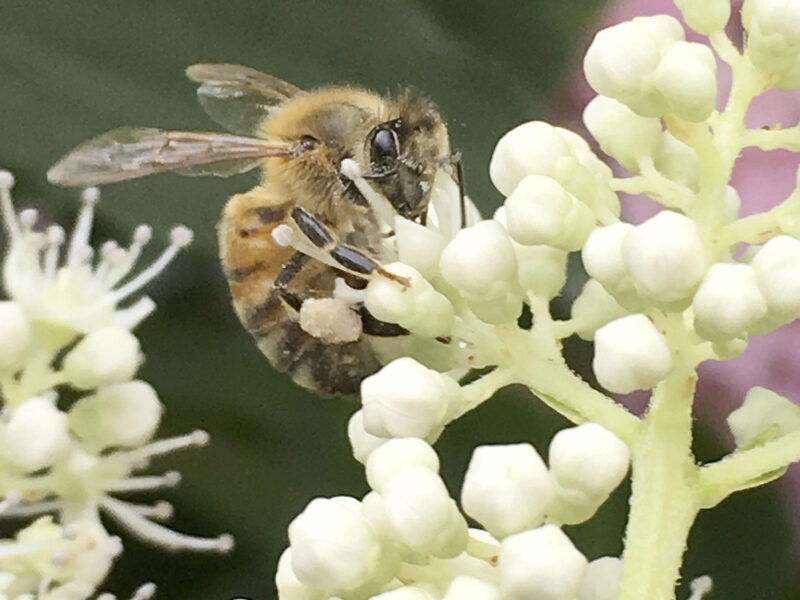

At 97 years old, British broadcaster/biologist David Attenborough is still learning and — more importantly — still teaching. On a recent NPR broadcast, he mentioned something about bees that I had never heard of, so I decided to dive in and try to get a better understanding so I could share it with you. No point spraining my brain and sparing yours!
Attenborough was talking about electromagnetic fields, and the way bees and flowers communicate through those fields. Now, as someone with degrees in journalism and English, this stuff is clearly above my pay grade, but I’ll do my best to explain it as I understand it.
Electromagnetic fields exist everywhere in the natural world. When a plant sprouts, its electrical field is essentially grounded by the earth from which it grows. So that new plant doesn’t have a notable electromagnetic charge. But as the plant grows taller — farther away from the ground — it develops a positively charged electromagnetic field, around 30 volts for every foot of growth.
When that plant blooms, it isn’t just being visually showy, it’s also sending out positive electric energy into the environment. In response to the positive electric field that exists around the plant, the flowers themselves develop a negative electrical charge.
Enter the honeybee. As she flies through the air looking for flowers, she bumps into tiny electrically charged particles, including bits of dust and other random small molecules. Those teeny collisions strip negatively charged electrons from the bee’s own electromagnetic field, leaving her positively charged.
As she approaches a flower, the negatively charged pollen is drawn to the positively charged bee like a magnet (hence the word “electromagnetic”). Pollen has been recorded actually jumping from the flower onto the bee’s fuzzy coat. So while the bee does deliberately collect pollen, stuffing it into the pollen pockets at the top of her rear legs, she also inadvertently collects a lot of extra pollen by virtue of this electromagnetism. Since pollen is the honeybee’s main source of protein, the more she brings back to the hive, the better.
This explains the many times I’ve seen a bee headed back to her hive almost entirely coated in yellow pollen particles. Her hive-mates are always excited to see her, and immediately begin removing the pollen from her coat and packing it into wax comb cells for later use.
In addition to being a source of extra food, those stuck-on pollen bits are a critical part of the pollination process. From a biological standpoint, the electromechanical status of the plant doesn’t exist to benefit the bees — that’s just a bonus. By creating an environment where pollen literally jumps onto a bee, nature is promoting plant propagation. As the bee travels from one flower to the next, some of the pollen on her coat rubs off, pollinating neighboring flowers and ensuring future generations of blooms.
Even more intriguing, researchers have found that bees are drawn to the charge given off by a nectar-rich flower. Once the bee sucks the nectar out, the flower’s charge weakens, sending a signal to other foraging bees that the cupboard is empty, at least temporarily. This saves them the time of looking for nectar in a flower that’s already been drained. And when the nectar refills in a couple of hours, the flower’s charge strengthens again.
A few years back, scientists at the University of Bristol in England designed an experiment to see if bees were aware of the electrical fields that affected them. Researchers created a large area filled with fake flowers — each one a stalk with a small dish at the top. Half the fakes contained sugar water, and half contained quinine, which the bees understandably found distasteful.
When the fake flowers held no electrical charge, the bees landed randomly on either. But when the sweet fakes carried a small electrical charge, the bees quickly learned to visit only the flowers with that charge.
Totally veering off down a bunny trail now, I wonder if that positive plant energy is a real thing in the hippie sense. Perhaps that’s one of the reasons houseplants and flower gardens can bring us such joy?
 More Posts from Lisa Daffy
More Posts from Lisa Daffy